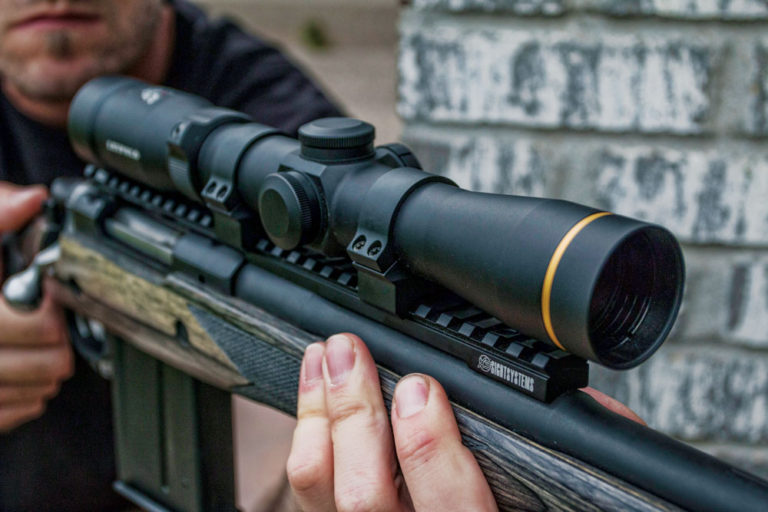
Some of the ‘busiest’ and ‘cleanest’ precision rifle reticles available today.
Top precision riflescope reticles:
- Nightforce MOAR
- Bushnell Deploy MOA
- Vortex Viper XLR
- Leupold Illuminated T-MOA
- Nikon Illuminated X-MOA and X-MRAD Reticles
- SIG Electro-Optics MOA/MRAD DEV-L
- Burris SCR MOA
- Schmidt and Bender
The most accurate precision rifles available are nothing without a riflescope of substantial quality. And such a riflescope is nothing without a reticle capable of helping you deliver a bullet on target from a long, long distance.
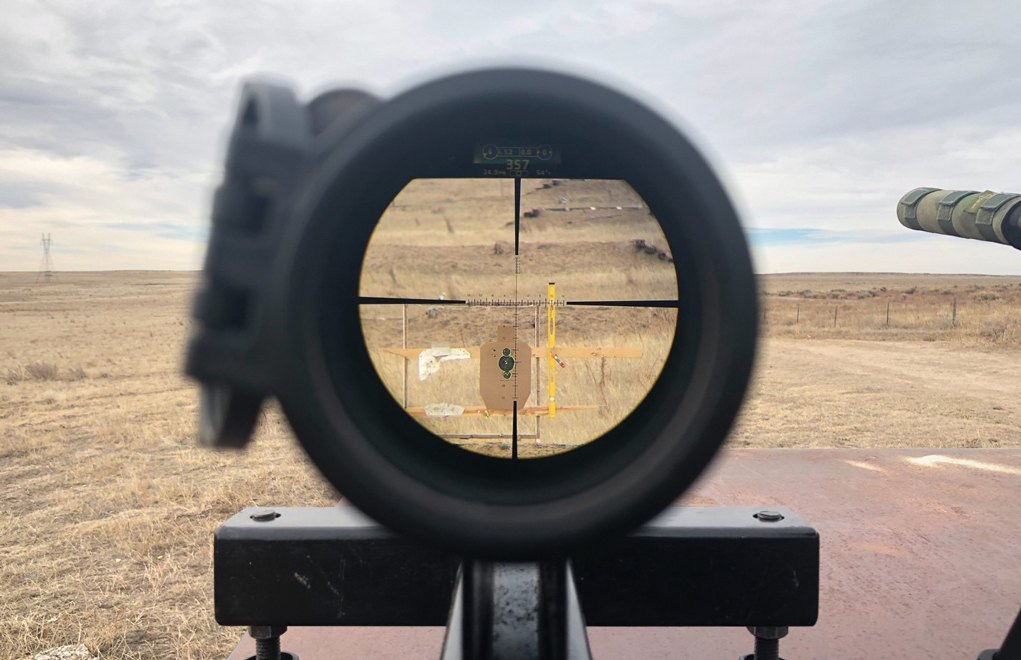
Why do you suppose it is that precision rifle shooting — or long-range shooting, as some call it — has jumped into popularity so fast? Seriously … think about it. The equipment is often quite expensive, and let’s face it: Finding a shooting range in excess of 600 yards is a major hurdle for most shooters across the United States. Long ranges, by definition, take up a lot of room.
Less than a decade ago ARs were just starting to make an entrance into the mainstream civilian market, and precision rifles were only used by Navy SEAL snipers on movies we all couldn’t get enough of. Very few people had one. And today, though the AR market remains strong, it’s fallen in the shadows of precision shooting. The amount of choices we have as precision rifle shooters — both in regard to gear and training opportunities — is simply amazing.
I could certainly fire-up a mile-long Facebook thread on what exactly is so appealing with precision rifle shooting, because everyone has a varying opinion on why it’s “cool” or, even more so, what gear to be using. And that overflow of opinions would prove exactly my point: customization and versatility.
Like the AR platform, precision rifle shooting offers a nearly unparalleled selection of calibers, cartridges, rifle brands and platforms, optics brands and platforms — right down to more reticle choices than even the most serious long-ranger can keep up with.
A Volume Of Visuals
The selection of reticles available in scopes marketed as “long-range optics” is astounding. It’s damn-near mind boggling. There are so many one-off options out there that it’s nearly enough to scare a shooter back to using open sights.
Zero In On More Optics Knowledge:
- Buying the Perfect Precision Scope
- Which Focal Plane Is Right For You?
- Improve Accuracy With Minor Scope Adjustments
- The Basics Of Riflescopes
- Video: SIG BDX Taking Optics To The Next Level
- Get our free Handbook of Standard Reticle Patterns ebook
there’s one thing I’ve learned from taking precision rifle courses and from watching some of the best shooters in the world play the long game, it’s that creating the perfect long-range rifle setup is done by following a precise formula — a formula that each individual shooter gets to make up for themselves. There is no right or wrong answer: just you, your setup … and your training.
Below is a smattering of innovative precision rifle reticles from a sampling of major players in the long-range optics field. All of these manufacturers offer at least a couple of options, and some offer a jaw-dropping number of reticle options. Some are quite complex, and some are very simple. Some pair with first focal plane scopes, and some don’t. Most are designed to be paired with ballistic turrets. Many are MOA configured, and some are mil-rad. Some will fit your preferred shooting style. Some won’t.
Nightforce MOAR Reticle
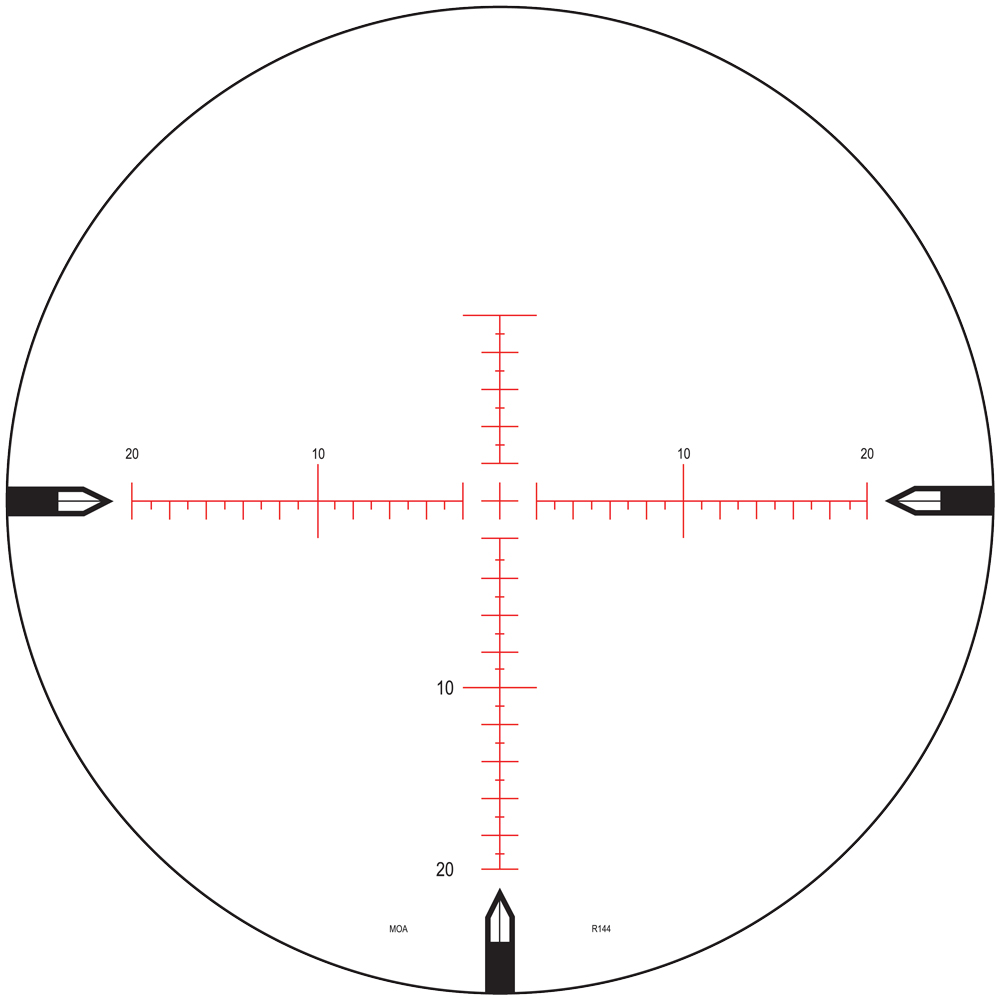
The Nightforce MOAR reticle features a floating center crosshair 2 MOA wide and 2 MOA tall that provides a precise aiming point where it matters most: on smaller targets at longer ranges. In addition, 1-MOA elevation and windage spacings provide for more accurate rangefinding and hold-offs. The MOAR has thicker line subtensions than Nightforce’s traditional reticles, and is marked with 10-, 20- and 30-MOA elevation indicators — and 10- and 20-MOA windage indicators — to help the shooter acquire targets extremely quickly and easily under field conditions.
The MOAR was designed specifically to be more intuitive, easier to see in low-light conditions and more visible against dark backgrounds and in shadows — the three areas that Nightforce believes cause the most visual problems for precision riflemen. www.nightforceoptics.com
Bushnell Deploy MOA Reticle
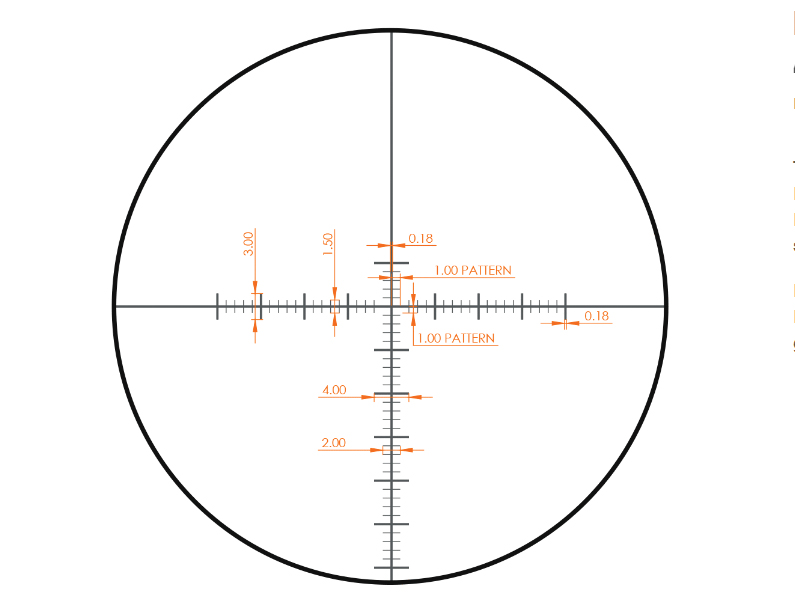
Designed for versatility, the Bushnell Deploy MOA reticle has been designed for hunters, target shooters, shooters of multiple calibers – anyone looking for extreme flexibility in what a riflescope has to offer. The 0.18-MOA thick crosshairs on the Deploy MOA are easy to see without obstructing the target picture, and hashmarks have been strategically placed at every 1 MOA for fast and accurate elevation holdover. The hashmarks below zero are 2 MOA wide to aid in accurate windage holds, which is an excellent yet subtle feature that helps keep the reticle visually clean without sacrificing utility. www.bushnell.com
Vortex Viper XLR Reticle

Designed to maximize long-distance shooting and ranging abilities of a precision rifleman and the rifle of their choosing, the Viper XLR MOA reticle is designed to effectively and quickly determine ranges, holdovers, windage and moving lead corrections. Laser etching on the glass reticle has been crafted with precision and ensures that MOA specifications are kept to the tightest possible tolerances. The design features hashmarks with wind-drift dots and 1 MOA wind reference subtensions, which is ideally suited for long-range shooters dialing for bullet drop or holding drop. In addition, the fine center crosshair subtensions on the XLR MOA reticle were carefully chosen to provide the optimum balance between precision aiming and low-light visibility. www.vortexoptics.com
Leupold Illuminated T-MOA Reticle
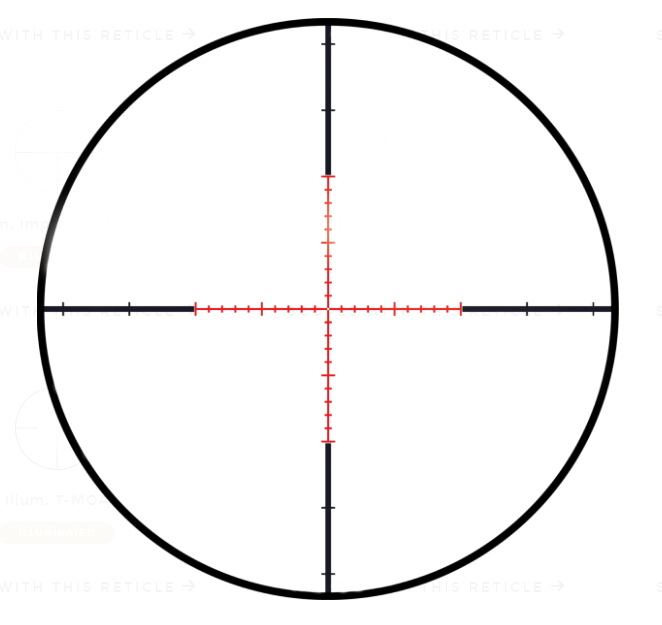
The Leupold Illuminated T-MOA reticle features stadia lines on the horizontal and vertical crosshairs set at 1 MOA for quick bullet drop and windage correction. The crosshair is left open to create a small, clear aperture for increased precision at longer ranges. Sound simple? That’s because it is.
The Illuminated T-MOA is available in the VX-6HD line of scopes, which feature CDS-ZL2 dial locks that can’t be inadvertently rotated off the zero. All Leupold VX-HD riflescopes are CDS capable and include one free Custom Ballistic Dial with purchase. The combination of the CDS-ZL2, Illuminated T-MOA and an electronic reticle level make Leupold a top contender in precision riflescopes. www.leupold.com
Nikon Illuminated X-MOA and X-MRAD Reticles

The Nikon Illuminated X-MOA and X-MRAD reticles are paired with the innovative adjustment systems in Nikon’s Black line of riflescopes, and they are glass-etched. The X-MRAD reticle provides any precision shooter with clean and simple — yet highly functional — advanced tools for estimating range, maintaining holdovers or dialing for elevation, and of course compensating for wind. Nikon also highlights the point that one advantage of using tactical-style reticles is that it can be applied to virtually any shooting application, regardless of caliber or ballistic performance. Nikon’s Spot On Ballistic Match Technology further expands the capabilities of the X-MOA and X-MRAD reticles for specific shooting applications, whatever that might be. www.nikonsportoptics.com
SIG Electro-Optics MOA/MRAD DEV-L Reticle
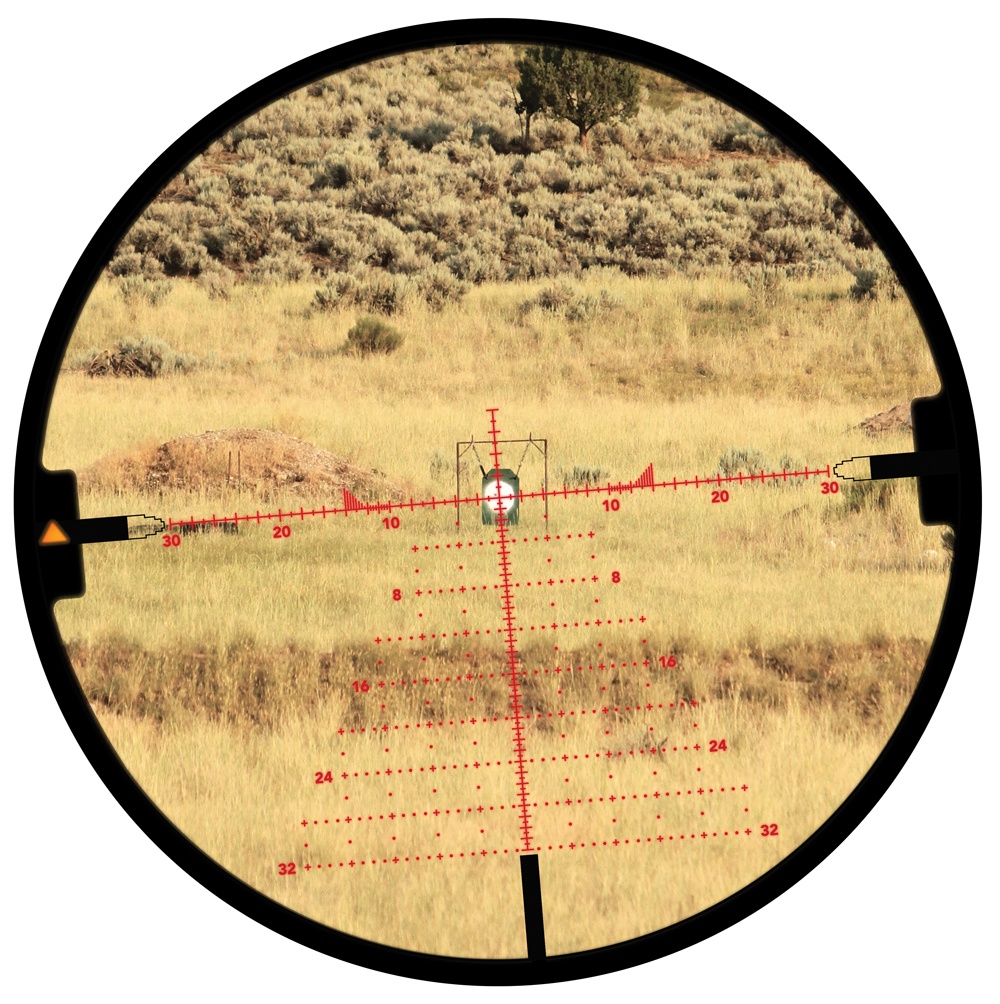
After announcing the release of the Tango6 5-30x65mm riflescope a few years ago, SIG Electro-Optics has continued to evolve at an industry-leading pace through the introduction of LevelPlex, a digital level that’s six times more accurate that a bubble level that’s designed to remove the accuracy-stealing cant from long-range shooting. To further solidify their place in the precision shooting optics realm, SIG Electro-Optics added the DEV-L ballistic holdover reticle to the Tango6 equation, giving shooters an extensive package of tools all in one riflescope. SIG also offers a SIG Ballistic Turret, SBT Dial, which is free and custom laser engraved to match the shooter’s unique ballistic information and environmental conditions. www.sigsauer.com
Burris SCR MOA Reticle
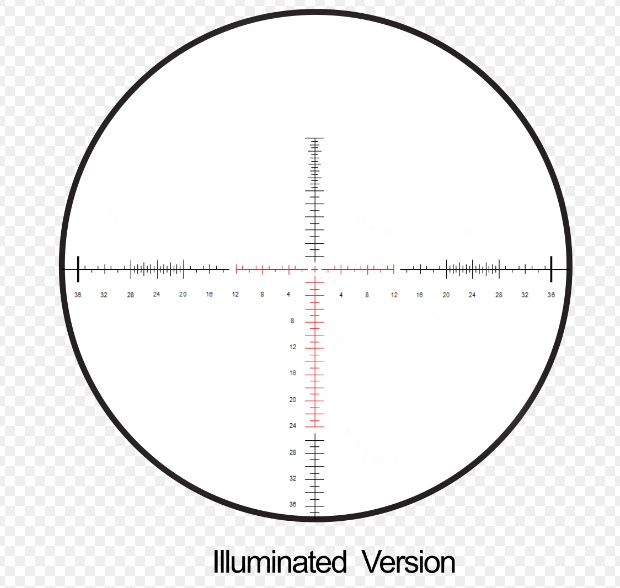
The SCR MOA reticle from Burris is available on several Burris riflescopes in both illuminated and non-illuminated models. The illuminated models extend the engagement of targets in low-light conditions, which are perfectly suited for hunters. In non-illuminated models, the fine details in the reticle are sharp enough for close-in focus — in virtually all lighting conditions — for ultra-precise dissection at even the most distant targets. Other features include: 1-MOA holdover lines; 0.5-MOA and 1-MOA windage hold-off lines for precision; and 0.25-MOA ranging brackets on the crosshairs, at the top, left and right. www.burrisoptics.com
Schmidt and Bender Reticle
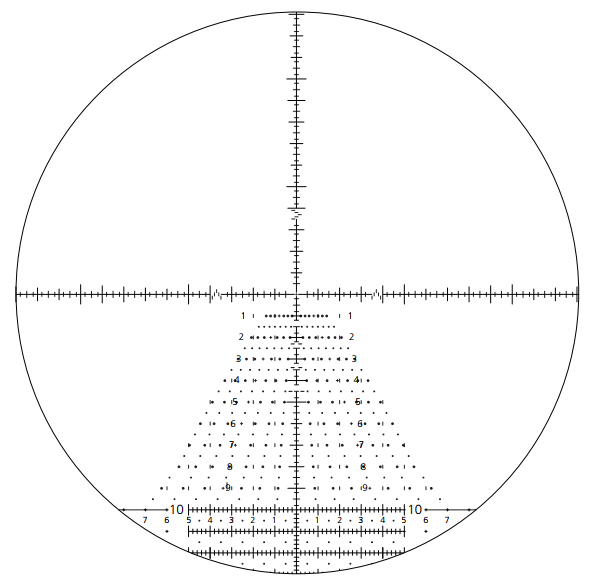
The Tremor2 reticle from Schmidt and Bender is designed by Horus Vision and is all about faster shooting — speed and ease, at a distance. According to Horus, the Tremor2 is field-proven to make wind calls easier.
Although the reticle is one of the “busier” reticles available, the Speed Shooting Formula is built directly into the elevation hold of the reticle, further promoting faster shooting. By design, the reticle also allows the shooter to accurately mil targets very quickly using the chevron 1/10-mil marks. Additional specs and features: Refined “chevron” mil markers subtend to 0.1 mils, versatile marker groupings, central dot at crosshair intersection for refined aiming point, open-above-center reticle for clear observation, and the Horus Grid allows shooters to visually place the target on the appropriate horizontal and vertical grid lines to correct for elevation and windage visually without turning knobs or counting clicks. www.schmidtundbender.de/en/
Conclusion
Selecting a reticle is, in my opinion, the most important feature you must consider when considering a riflescope for your precision setup. Choosing a reticle can also be like picking out a puppy: You never really know what you’re getting into until you get it home and play with it for a while.
My best advice is to get some precision rifle training from a reputable instructor who will allow you to shoot a variety of different rifles, optics and of course — reticles. Take this “test drive” to see what works for you before you flop a bunch of cash out for your own gear, and you’re certain to end up a much better precision shooter in the long run.
Editor's Note: This article originally appeared in the October 2017 issue of Gun Digest the Magazine.

Next Step: Get your FREE Printable Target Pack
Enhance your shooting precision with our 62 MOA Targets, perfect for rifles and handguns. Crafted in collaboration with Storm Tactical for accuracy and versatility.
Subscribe to the Gun Digest email newsletter and get your downloadable target pack sent straight to your inbox. Stay updated with the latest firearms info in the industry.

![Best Concealed Carry Guns In 2025 [Field Tested] Wilson Combat EDC X9S 1](https://gundigest.com/wp-content/uploads/Wilson-Combat-EDC-X9S-1-324x160.jpg)


![Best 9mm Carbine: Affordable PCCs [Tested] Ruger Carbine Shooting](https://gundigest.com/wp-content/uploads/Ruger-Carbine-Shooting-100x70.jpg)
![Best AR-15: Top Options Available Today [Field Tested] Harrington and Richardson PSA XM177E2 feature](https://gundigest.com/wp-content/uploads/Harrington-and-Richardson-PSA-XM177E2-feature-100x70.jpg)

The Vortex Diamondback 4-12×40 sounds like a great option for long-range shooting on a budget, especially for hunters. I’m interested in learning more about the glass clarity and reticle – those are always important factors for me when choosing a scope. Overall, this review is a helpful resource for anyone considering a Vortex scope.
My Reticles:
For Competition-> Horus H59 reticle
For Hunting-> G3